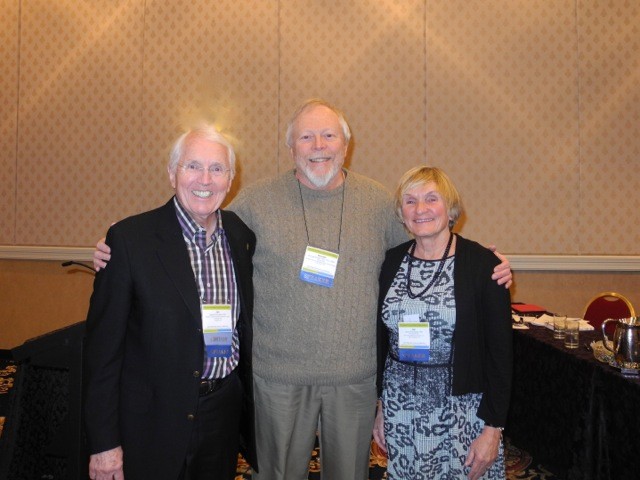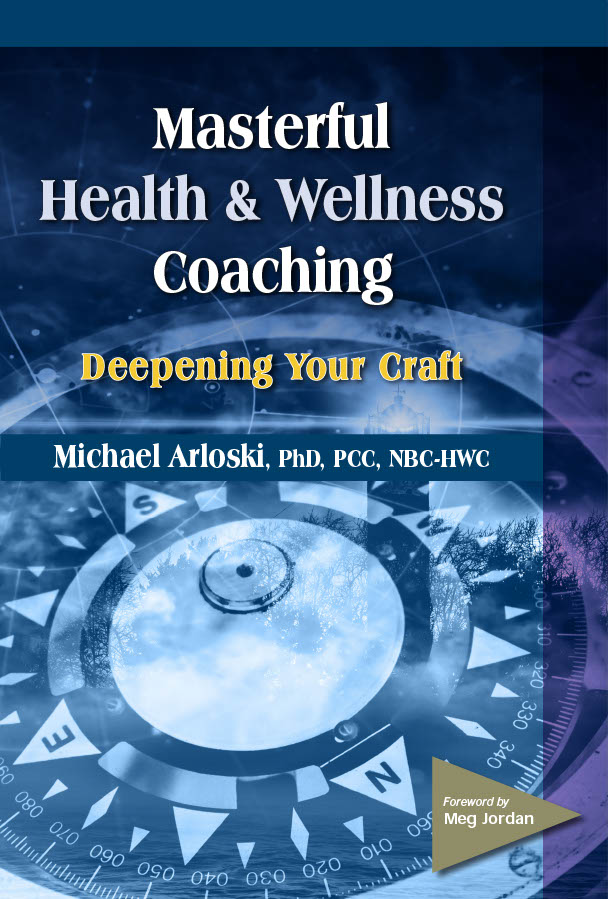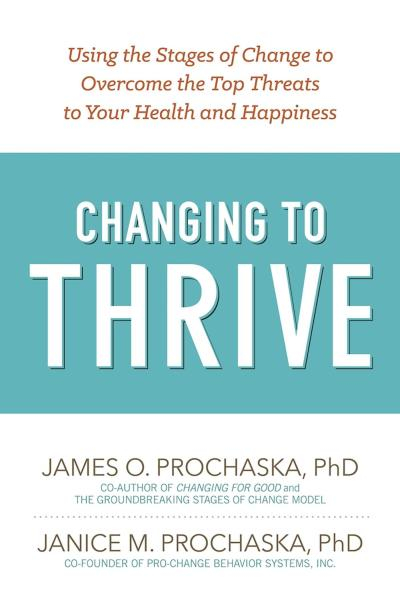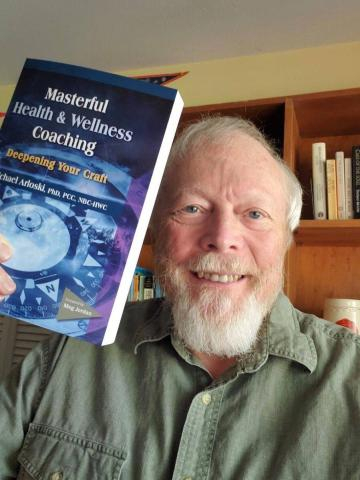Busting Out of Precontemplation: TTM and Wellness Coaching

James and Janice Prochaska were kind enough to edit the section of my new book Masterful Health & Wellness Coaching: Deepening Your Craft https://wholeperson.com/store/masterful-health-and-wellness-coaching.html that conveys how coaches can make use of their model for behavioral change – The Transtheoretical Model. I am deeply grateful to them for this. While many coaches are familiar with their work on the “Stages of Change” model, there is still much to be learned about how to apply it, especially when we look at the first stage of change – Precontemplation.
 Here is a small section of the chapter from my book that addresses this coaching challenge.
Here is a small section of the chapter from my book that addresses this coaching challenge.
The Precontemplation Stage
Imagine that your client has come to you as a referral from their physician or is there because of an employee wellness program incentive that will save them 20% on their health insurance premium. They are not enthused to see you and, despite some serious medical conditions, are not optimistic about coaching helping them to accomplish better health –something they have struggled with for years. They reluctantly tell a story of repeated failure attempts at weight loss, smoking cessation, etc. They would rather not even be talking about trying again to make changes happen. They know that their lifestyle habits are working against their health, but they have no confidence that another wellness program will help, or that they, themselves, would be successful at it.
They have not given up entirely. They do walk their dog every day and have joined friends in participating in a hiking group that gets out every other weekend. They are worried about the effect that secondhand smoke may have on their grandchildren whom they watch two days a week and are seeking more information about using nicotine patches as part of a tobacco cessation program. Yet, they believe that there is no way to change their eating habits and don’t even want to discuss this. They have made many attempts at dieting with the classic ‘yo-yo’ effect of weight loss followed by immediate regaining of those pounds. In TTM terms we could help our client to realize that they are in the Action Stage with becoming more active, and in the Preparation Stage with smoking cessation. When it comes to improving their diet as part of a weight loss effort however, they are entrenched in Pre-contemplation.
This illustration shows us that every client is a person with a complex set of attitudes, beliefs, behaviors, and experiences. Sometimes our clients are full of contradictions and paradoxes. Sometimes they are angry, frustrated, sad, dejected, or experiencing any combination of emotions. As we apply TTM theory we must remember that this theory aknowledges this complexity and as we help our clients to become aware of where they are at with the process of change, we must do so with compassion and sensitivity as well. This is especially true with Pre-contemplation.
 A common misunderstanding about this stage is the belief that individuals don’t want to change. Rather, in Pre-contemplation individuals do not have the intention to change. “There is a big difference between wanting and intending (Prochaska J. a., 2016).”
A common misunderstanding about this stage is the belief that individuals don’t want to change. Rather, in Pre-contemplation individuals do not have the intention to change. “There is a big difference between wanting and intending (Prochaska J. a., 2016).”
“People in precontemplation are often labeled as being uncooperative, resistant, unmotivated, or not ready for behavior change programs. However, our research showed us that it was the health professionals who were not ready for the precontemplators.” (Prochaska J. a., 2016)
What is really going on for the precontemplator? As I heard a speaker at a lifestyle medicine conference put it, “the dream of better health goes to sleep”. The person may have reached a point in life where they stop evaluating how they have been living. Their self-efficacy is usually very low when it comes to changing a particular behavior, or a group of behaviors that might be necessary for improved health and wellbeing. What often gets in the way is what the Prochaskas have identified as ‘The Three D’s’.
 The Three D’s of Precontemplation
The Three D’s of Precontemplation
1. Don’t know how: This is characterized by a lack of awareness or understanding of how the behavior change may benefit the individual or a lack of awareness of how not improving their lifestyle may bring them harm. The person may benefit from some healthy-living education. The Prochaskas make the point that education is not intended to result in Action. It is intended to move someone into Contemplation. The client may also not know what to do to begin a process of change. Their attempts at change in the past may have been lacking any real plan, support, or accountability.
2. Demoralization: Often our clients are stuck in uncertainty about their ability to change or they fear failure. This frequently arises from repeated attempts to change which have resulted in failure. They may identify causal attributions or reasons why they can’t change. (Not having enough willpower, not having the right genes, low self-efficacy based on repeated failure.). Our client is so discouraged that they don’t even want to consider taking on another attempt at change.
 3. Defending: Sometimes our clients feel criticized by people in their lives about the way they are living an unhealthy lifestyle. Their tendency may be to defend or protect their current risky behavior. Defensive behavior is in fact most often a way of protecting independence or autonomy. They may do this by:
3. Defending: Sometimes our clients feel criticized by people in their lives about the way they are living an unhealthy lifestyle. Their tendency may be to defend or protect their current risky behavior. Defensive behavior is in fact most often a way of protecting independence or autonomy. They may do this by:
a. Turning inward: blaming themselves and/or retreating inward. We may see them withdrawing interpersonally and dis-attending (tuning out). They may internalize their blame, which leads to lower self-esteem and yet more demoralization.
b. Turning outward: blaming others, outward circumstances, etc. We may see them projecting the blame onto others. “My family won’t change the way they eat, so, how can I?” They may displace their own frustration by being angrier and more critical of others.
c. Coaches often hear their clients explaining away risky behaviors. They may rationalize why it is okay for them to maintain the status quo. We sometimes hear intellectualizing, using facts and data to justify bad habits. Everyone seems to know some person who lived to a ripe old age and reveled in exhibiting all of the health-risk behaviors they could.
One of the causal attributions that coaches frequently hear from the client in Precontemplation is that they lack motivation. As we saw in Chapter Six, our clients often have plenty of sources of motivation, but have been lacking the “vehicle” – the behavioral change methodology, the structure that coaching can provide – to put that motivation to work. They have usually participated in action-oriented programs that urged them to start making huge changes in their lives quite suddenly.
The beauty of the TTM approach is that it honors where the person is and helps them gradually progress to where action and success can happen. The Prochaskas direct us to provide hope for our clients. Having a behavioral change ally and the support of that coaching alliance combined with a solid behavioral change process can offer so much more hope than simply trying again to change as our client has before.
By honoring client autonomy, we can avoid bringing out defensiveness in our clients. The last thing a client wants to hear is someone telling them that they are living their lives in the wrong way. There is a story behind every behavior. Our client may have any number of Social and Environmental Determinants of Health that make lifestyle improvement very challenging. The key is to help our client frame these factors as just that – challenges ‒ and offer our coaching alliance as a way to co-create strategies to deal with them.
Perhaps another strategy to consider for reducing defensiveness is to move away from the health-risk reduction approach to wellness. Instead focus on building healthy behaviors that the client is attracted to. Help them build on their strengths and engage in experiments that will result in easily achieved success at behavior change. Help them to examine their own belief systems and get in touch with positive sources of motivation.
 Masterful Moment
Masterful Moment
When the more masterful coach hears justifications coming from their client, they are alerted to reflect on how they have been coaching with this person. Have they been saying anything to bring out a defensive posture? Have they been pushing their own agenda of reducing health risks too hard? Are they becoming too directive and not co-creating the conversation with their client?
Creating Forward Momentum – From Precontemplation to Contemplation
In Precontemplation our client most likely considers lifestyle improvement ever so briefly, then dismisses it. How do we get our client not to jump into swift action, but to merely give change serious consideration, to contemplate it? TTM offers three primary methods to help coaches tackle this imposing challenge: raising the pros while reducing the cons of change; dramatic relief; and consciousness raising.
The First Principle of Progress: Increasing Pros to Move from Precontemplation to Contemplation
Why would anyone begin to change when the reasons against such an endeavor outweigh the perceived benefits that might result? How do we do so without a campaign of persuasion (which most likely will not work)? Have you ever tried to convince someone to be well? Clearly the pros of changing must outweigh the cons, but how do we help our clients to discover this? This is where considerable coaching skill is required.
At the start of Precontemplation the cons are high, and the pros are low. This is how our client perceives themselves and their situation. As we begin coaching, we start with an open phase of exploration and encourage the client to engage in a process of self-assessment. By not rushing to set up goals and action steps we avoid pushing the client beyond their stage of readiness. The more coach and client explore together the more apparent the stage of change emerges for each behavior that is being considered for change. The Precontemplation Stage shows up in our client’s language. We hear our client make the case for why they believe they cannot change a particular behavior and/or do not want to. The list of cons is recited sometimes with a sense of helplessness, sometimes defensively. This part of the client’s story needs to be met with compassionate understanding, but not collusion. That is, the coach can empathize but not agree with the client that change is so terribly difficult. Reframing it as a challenge can be important here.
The coach proceeds in the coaching conversation not with the goal of stimulating the client into action, but simply to get them thinking – to weigh the pros and cons. We can do so by:
- Offering education. The Prochaskas do this by providing clients with extensive lists of the benefits of various lifestyle improvements. The wellness coach may offer other resources or help the client to find more information on their own and make those efforts part of the coaching process.
- Challenging assumptions. James Prochaska is fond of saying that people too often underestimate the benefits and overestimate the costs of change. If our client appears to be operating on an assumption about what would be involved in making changes, it’s a perfect time to call out the assumption. Again, a great line for the coach is “So, how do you know that to be true?” This can build into a powerful coaching conversation about re-evaluating their pros and cons.
- Engaging in Decisional Balance. In the context of coaching, this would be a coaching conversation exploring with our client the pros and cons of change. We can help our client to list the advantages and benefits of change that they are aware of. We can help them list the ways in which change may lead to disadvantages or penalties in their life. The Prochaskas were able to develop brief assessments of six to eight questions to help with this process (Prochaska J. a., 2016). As they researched decisional balance they came to an important realization. “Although we didn’t realize it for some time, we were also discovering that making the decision to change one’s behavior for improved health was nowhere near as rational and empirical as we had assumed. Nor was it nearly as conscious.” (Prochaska J. a., 2016)
Prochaska, James, and Prochaska, Janice (2016). Changing to Thrive: using the stages of change to overcome the top threats to your health and happiness. Center City, MN: Hazelden Publishing. https://jprochaska.com/books/changing-to-thrive-book/
Find much more about how to coach someone from Precontemplation to Contemplation in Chapter Eight of Masterful Health & Wellness Coaching: Deepening Your Craft, by Dr. Michael Arloski https://wholeperson.com/store/masterful-health-and-wellness-coaching.html.
 Michael Arloski, Ph.D., PCC, NBC-HWC is CEO and Founder of Real Balance Global Wellness - a world leader in health and wellness coach training. (www.realbalance.com). Doctor Arloski is a pioneering architect of the field of health and wellness coaching. He and his company have trained thousands of coaches around the world.
Michael Arloski, Ph.D., PCC, NBC-HWC is CEO and Founder of Real Balance Global Wellness - a world leader in health and wellness coach training. (www.realbalance.com). Doctor Arloski is a pioneering architect of the field of health and wellness coaching. He and his company have trained thousands of coaches around the world.








Only registered and logged in readers can leave comments.